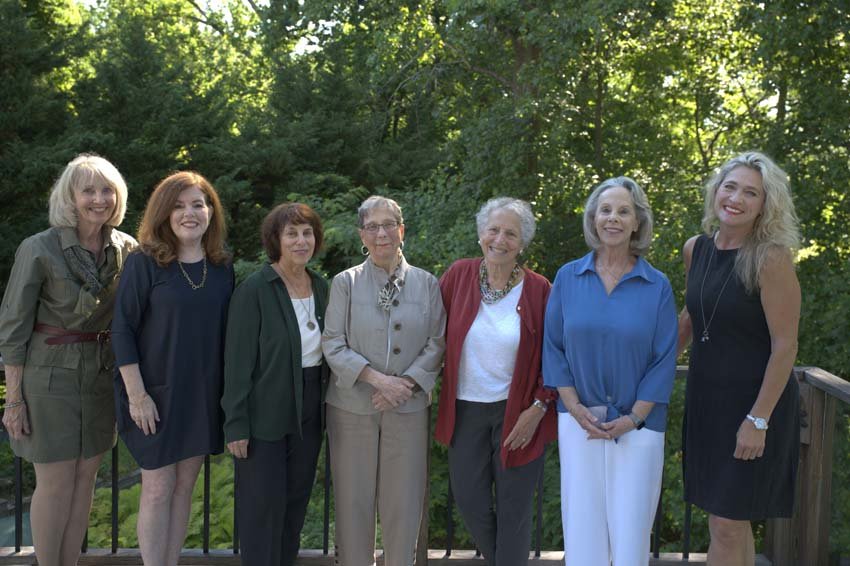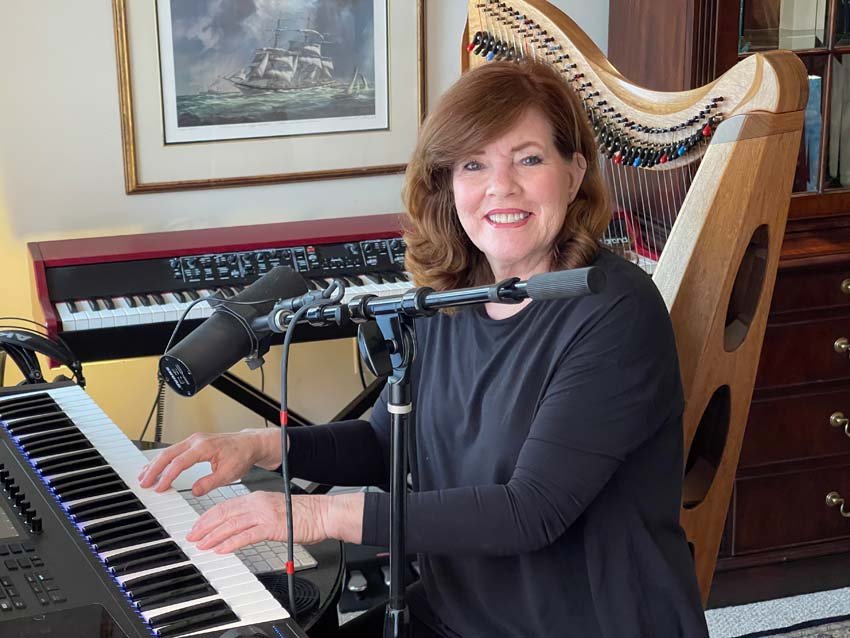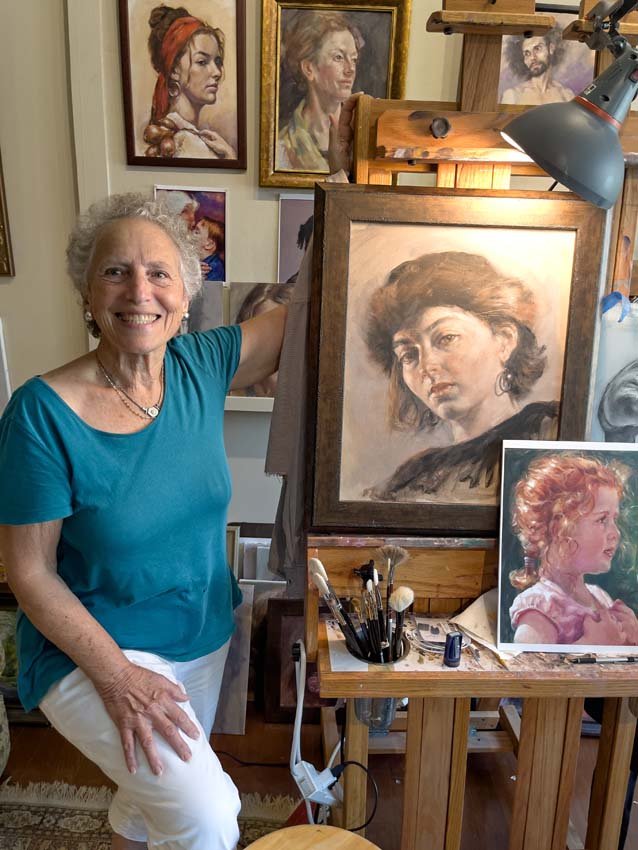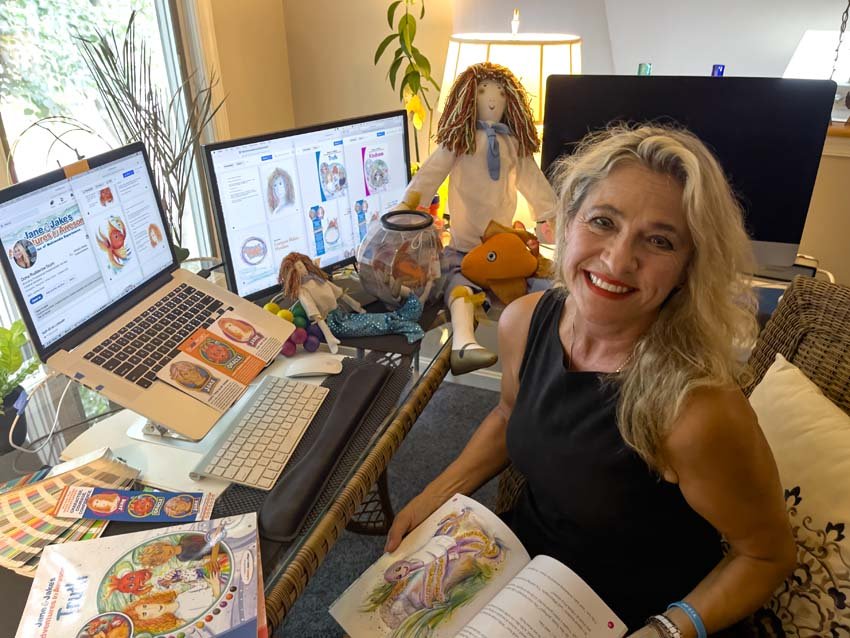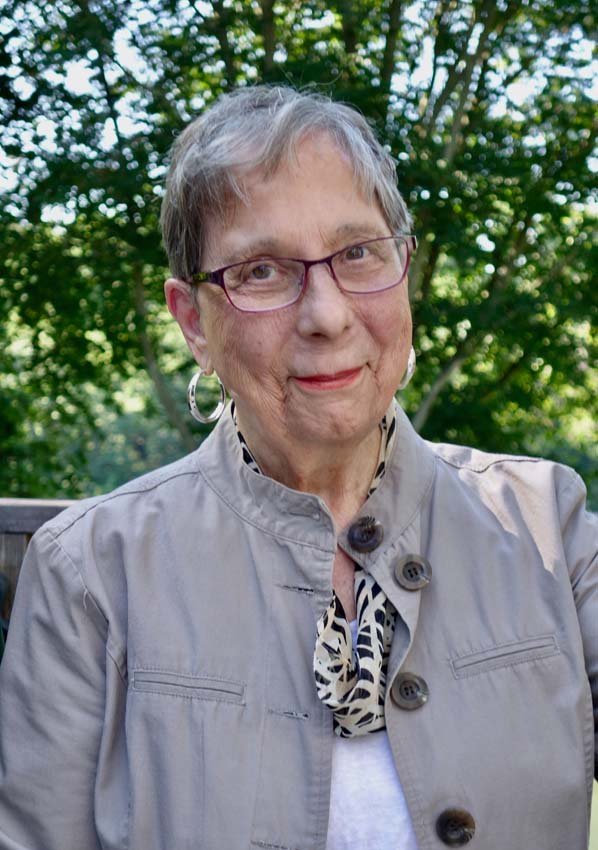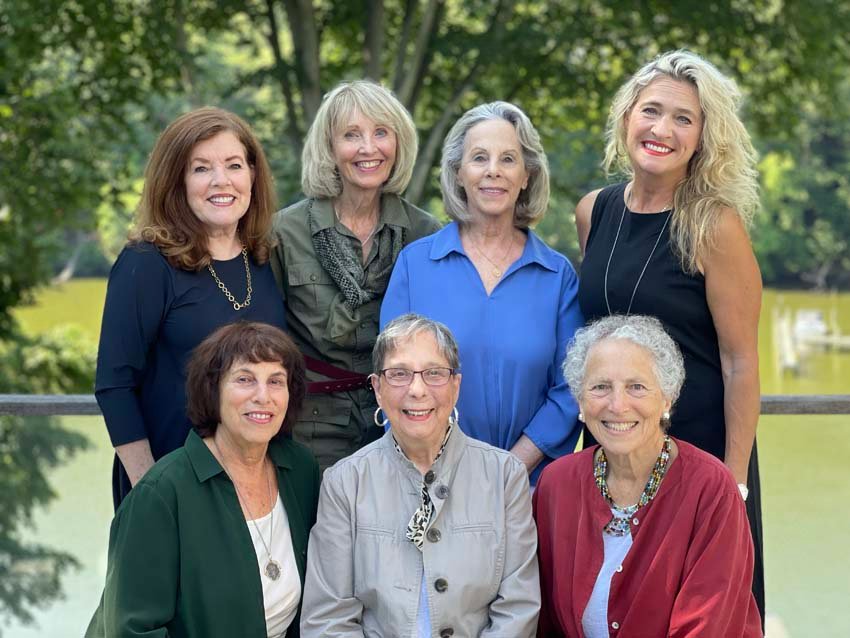+ By Janice F. Booth + Photos by Jody Robinson
What happens when you bring together a musician-composer, two journalists, a lawyer-portraitist, abstract expressionist painter, and a designer-artist? Sometimes, you get poetry—that is, if you’re under the spell of Maryland’s tenth poet laureate, Grace Cavalieri.
Three years ago, Meg Robinson, a renowned composer for the harp, invited 6 women to discuss their creative activities and plans. When it was Cavalieri’s turn to address the group, she talked about her writing—poetry, drama, and historical fiction—and her role as a Maryland poet laureate, teaching people of all ages to create their own poetry.
“Anyone who is motivated can learn to create poetry,” she assured the gathering. “How about us?” someone asked. So, that day, Cavalieri offered to teach a poetry-writing workshop for any of the gathering’s attendees who might be interested. Six women, myself included, signed up. And from there, it has been quite a ride.
Cavalieri set the tone for the workshops by hosting our little group. She fed us and led us through as we wrote our first poems. Within a few months, however, our workshop, “Artists Who Are Poets,” was faced with the social restrictions that came with the COVID-19 pandemic. We persevered, continuing the workshop online. Since that challenging beginning, we have faithfully Zoomed with Cavalieri twice a month. Before each gathering, we each write a poem in a particular style or on a particular topic, based on Cavalieri’s prompt.
After 16 months and 32 workshop sessions, our leader insisted that it was time to jump in the deep end. We gathered our poems, discussed which were strongest and most accessible to a general audience, and selected over 70 original poems to publish. The collection’s title, The Song In the Room: Six Women Poets, came to us from Robinson, the musician who had brought us together. She observed that when she was composing with other musicians, the composition was referred to as the “song in the room.”
There are lots of attempts to define poetry, and most or all the definitions include two words: beauty and meaning. But even those two concepts are debated. What is central to Cavalieri’s poetry and her teaching is the bedrock of truth—going deep into the heart of an idea or experience to find, as Cavalieri says, your truth. One of Cavalieri’s poems that address this core of truth is titled “This Poem Is Asking For Your Love.” Here is an excerpt:
This poem is not usually like this
I don’t know what came over it
It’s mostly violet under the sun
with a large yellow parasol
and a pond with a center that never freezes
I swear I had no idea
I’m so used to trees of hearts
and cherries within its branches
I can’t imagine
what woke this poem up
with a truth I never wanted . . .
It had no idea what trouble could come
from this so I wrote it
then I ran from it
now I can erase it
to show I never needed it after all
because don’t you know, Poem,
if you have to ask for something
it’s no gift.
We six intrepid women—cautious at first but slowly building trust—have written our truth, often using specific poetic forms such as the French villanelle, which involves repeated lines and rhymes; an Arabic ghazal, with complex line repetition; the Italian-Petrarchan and English-Shakespearean sonnets of 14 lines on a love theme; the spare and beautiful Japanese haiku; and a Greek elegy lamenting what is lost. It has been fun and challenging, diving into poetry from such varied cultures. These wide-ranging forms have deepened our understanding of other cultures and how they express truth and beauty poetically.
Truth emerges in many guises in our poetry. After some winter weeks spent on Florida’s Sanibel Island, Natalie Canavor, author of several texts on business communications, NYU professor, and award-winning journalist for the New York Times, wrote “Beach Sonnet,” which reflects upon the delicate seashell found in abundance on Sanibel’s beaches. Here is part of it:
We snatch the most flawless from beds of sand
To ponder beauty . . . the meaning of art . . .
Hold the perfect small miracles in hand
And feel a joyful upswing of heart.
But we decline to consider the sculptor
Unless we find the alien creature inside.
Then we recoil from its slithery horror,
Our blackest nightmare personified.
Is this the inexorable end all along?
Throw out the singer, treasure the song?
She chose to write her musing on seashells as a sonnet, a poem on some facet of love. Canavor, reflecting on what she has learned and how her understanding of the poetic voice has deepened, says: “I learned that the magic of poetry is in the space between words; what you don’t say is just as important as what you do say.”
Each of the group’s participants is active in the world, exceling and experienced in challenging careers. Each has made homes and raised families. We were surprised to find that the skills and insights from our lives naturally lend themselves to poetic forms. Carole Falk, an abstract expressionist painter whose works hang in corporate offices and private homes, is an authority on Asian art and writes about art. She experiences language in the context of painting. “Poetry is an act of sensual meditation—painting with words, matching the mind with clarity and color,” she says. Her poem “True or Not” captures what her artistic sensibility perceives:
Can a river be lonely?
Can waves yearn to hold last summer’s ducks;
can the rhythm be lost when no one is looking?
Barnacles amass on a piling—
growing, eroding without anyone noting.
Rocks lay unmoved, gathering algae while
grasses grow unchecked at water’s edge
and sway to an unheard song.
I hear the river sigh.
Dona B. Rudderow operates her own commercial arts business, DONACO Design Communication, and is also recognized as a visual artist Her children’s literature series Adventures to Awesome has been used in curriculums nationally. She brings all of this and her world travels into her writing. “Poetry has opened my eyes, heart, and soul to my world, and all that is around me,” she says. Her poem “Possibilities,” takes the reader to the edge:
laying in the Arctic snow,
gazing up,
at the crackling Northern Lights . . .
silence is before me,
so meager a being I am,
laying under the universe before me . . .
yet empowered,
discovering strength,
within me!
Sandy Jackson Cohen, formerly a lawyer with the Maryland Office of the Attorney General, is a widely acclaimed portrait artist affiliated with Maryland Hall for the Creative Arts. Cohen has taught law, farmed blueberries, and avidly defends the waters and shoreline of the Chesapeake Bay. “Poetry offers ways to artfully express authenticity–so that one’s truth can sing. Sometimes, creating a poem helps in finding that truth,” she says. Cohen’s poem “Haven” illustrates this discovery of truth as she thinks about life both wild and free along the Chesapeake Bay. Here is an excerpt:
This is their place –
the free, the wild ones.
Here I stay by their grace
to be renewed when I come . . .
You wonder that I say I miss them
when they’re called by instinct to depart.
True – I’ve never touched or held them.
Yet free creatures swell my heart.
These foxes, eagles, flocks of swans –
this place of pause from the race we’re on.
Robinson, the spark that set us all afire by bringing us together, writes, performs, records her own songs, and leads an online support group. “Writing poetry is both similar to and different from writing song lyrics,” she reflects. “When I write poetry, I am creating a different kind of music. What works in a song may not work as a poem. But devices like metaphor, simile, and personification are useful in both lyrics and poetry.” An effective example of what Robinson is describing is her poem “People Are Museums.” Here are the first two stanzas; you’ll recognize this poem’s metaphor:
People are museums.
They are collections.
They are special exhibits
of emotions and ideas and beliefs . . .
People are displays that can be seen at certain times.
When the signs says “Open.”
When you have a ticket to enter,
They sometimes give tours,
When they want to let you through the door . . .
I have learned so much from this group of poets, and they influence the poetry I write. I have found that, while reading poetry has always been a thought-provoking pleasure, it also helps me to see perspectives that I might have overlooked or ignored. When I write a poem, I step out of my comfort zone and move about in the joys and sorrows, and fears and delights of the unexpected. In my poem “Dark Places,” I acknowledge the experience of discovering what I have hidden. Here is an excerpt:
Have you a drawer that holds who-knows-what?
A seldom opened, shadowed, dusty place
to toss life’s odds-and-ends, and keys to rooms now shut?
I’ve found forgotten fragments, talismans to bring me luck.
Faded memories rise unbidden, and time could not erase
what’s left inside my drawer that holds who-knows-what . . .
Why clear the shards, untie the knots,
forgive myself and others, in each case?
I have a drawer that holds who-knows-what,
and I alone keep keys to rooms now shut.
This poem in its entirety is a villanelle that relies on line repetition. I find the repeating of certain lines almost hypnotic, taking me, and perhaps my reader, into those forgotten, dusty recesses of my life.
Truth, authenticity, veracity–these are the measures of our work. We’re always leaning into new challenges, new opportunities, and new discoveries. And that is where our six, disparate lives converge. We have all gone deeper into our histories, our loves, and our losses, and we have come through it stronger and wiser. Poetry shows us the richness of sharing our truth and creating beauty from pain and joy, sometimes in equal parts. We find ourselves. All this revelatory work takes courage.
Each of us has begun a new, exciting profession, one that will never end. As our mentor Cavalieri says, “To be awake in the world, and then to write it, is to live twice. We are the lucky ones.” █
For more information about The Song In the Room:
Six Women Poets, visit https://amzn.to/3bb78bw.
